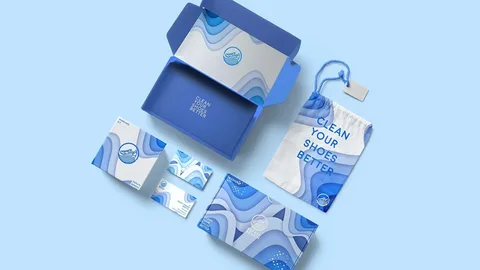In today’s competitive marketplace, branding and packaging are not just functional elements—they are integral to a brand’s identity and customer experience. When aligned effectively, they create a cohesive narrative that resonates with consumers and fosters brand loyalty. This article explores the symbiotic relationship between branding and packaging, highlighting why their collaboration is essential for business success.
Establishing Brand Identity Through Packaging
Packaging serves as the first physical touchpoint between a brand and its consumers. It communicates the brand’s identity, values, and personality. For instance, eco-friendly brands often use sustainable materials and natural colors to convey their commitment to the environment . This thoughtful approach resonates with consumers who prioritize sustainability, reinforcing the brand’s ethos.
Enhancing Brand Recognition
Consistent branding across packaging elements—such as logos, colors, and typography—helps in building brand recognition. Studies have shown that consumers are more likely to purchase products if they recognize the packaging. A study by Nielsen found that when a product had consistent packaging, consumers were 70% more likely to purchase it than they would be if the packaging was different . This consistency fosters familiarity and trust among consumers.
Differentiating from Competitors

In a saturated market, distinctive packaging can set a brand apart from its competitors. Unique design elements, such as innovative shapes, textures, or interactive features, can capture consumer attention and create a memorable impression. For example, Apple’s minimalist packaging design is unique and helps differentiate its products from competitors .
Reflecting Brand Values
Packaging is a powerful medium to communicate a brand’s values and commitments. Brands that prioritize sustainability can showcase this through eco-friendly packaging materials and designs. This not only appeals to environmentally conscious consumers but also strengthens the brand’s reputation as a responsible entity .
Creating Emotional Connections
The unboxing experience is an emotional journey for consumers. Thoughtfully designed packaging can evoke positive emotions, leading to increased customer satisfaction and loyalty. Sensory branding, which involves engaging multiple senses through packaging design, can enhance this emotional connection. For instance, the tactile feel of a product’s packaging can influence a consumer’s perception of its quality .
Facilitating Brand Storytelling
Packaging provides an opportunity to tell a brand’s story. Whether it’s through visual elements, materials, or messaging, packaging can narrate the journey and values of a brand. This storytelling aspect can engage consumers on a deeper level, making the brand more relatable and memorable .
Supporting Marketing and Advertising Efforts
Packaging acts as a silent salesperson, reinforcing marketing messages and advertising campaigns. Consistent branding across packaging and promotional materials ensures a unified brand message, enhancing the effectiveness of marketing efforts. This alignment helps in building a strong brand presence and recognition in the market.
Adapting to Consumer Preferences
Consumer preferences are constantly evolving, and packaging must adapt to these changes. Brands that stay attuned to consumer trends and feedback can innovate their packaging to meet new demands. For example, the growing preference for sustainable products has led many brands to adopt eco-friendly packaging solutions, aligning with consumer values and expectations.
Enhancing Customer Experience
The design and functionality of packaging play a crucial role in the overall customer experience. Easy-to-open, durable, and aesthetically pleasing packaging can enhance customer satisfaction. Additionally, packaging that provides clear information and instructions can improve the usability of the product, leading to a positive consumer experience.
Leveraging Packaging for Brand Advocacy
Consumers who have positive experiences with a brand are more likely to become brand advocates. Packaging that delights and surprises can encourage consumers to share their experiences on social media, amplifying brand visibility and credibility. This user-generated content serves as authentic endorsements, attracting new customers and fostering brand loyalty.
Conclusion
The integration of branding and packaging is not merely a design choice; it is a strategic imperative that influences consumer perceptions and business success. By aligning packaging with brand identity, values, and consumer expectations, businesses can create a cohesive and compelling brand presence. This synergy not only differentiates a brand in the marketplace but also fosters lasting emotional connections with consumers, driving loyalty and advocacy. In essence, when branding and packaging work together harmoniously, they transform a product into a memorable experience that resonates with consumers long after the initial purchase.

Leave a Reply